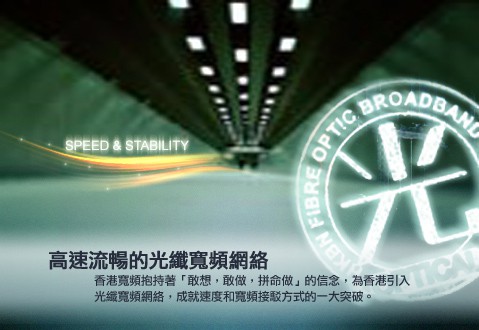 Now that FCC Chairman Julius Genachowski has put the issue of Net Neutrality on the front burner, the often-ludicrous reasons some people give to oppose Net Neutrality are coming out all over the place. When you find one that is particularly preposterous, use the Contact Us link at the top of the screen and drop us a summary and a link. We’ll be calling out the silliest and debunking those that might sound good on the surface but have a soft, squishy, logic-free center.
Now that FCC Chairman Julius Genachowski has put the issue of Net Neutrality on the front burner, the often-ludicrous reasons some people give to oppose Net Neutrality are coming out all over the place. When you find one that is particularly preposterous, use the Contact Us link at the top of the screen and drop us a summary and a link. We’ll be calling out the silliest and debunking those that might sound good on the surface but have a soft, squishy, logic-free center.
To get us started, this letter to the editor turned up last week in The Seattle Times:
The recent Seattle Times editorial on net neutrality seemed logical on the surface [“Protecting net neutrality,” Opinion, Sept. 22], but in reality was a Robin Hood-style regulation.
Let me pose a question: What would The Times’ opinion be if the Federal Communications Commission mandated The Times’ facilities were open to anyone who wants to use it as they wished?
I suspect the company would probably make an argument that it made the huge capital investment, and therefore should have control over who can or cannot use it.
So explain, what is the fundamental difference between the management of this capital asset and that of a company such as Comcast or any other Internet provider?
I suspect nothing other than another example of government intervention into a business and technology they do not understand. The Times should be thankful they are not focused on the newspaper industry.
I’ve long accused the Federal Communications Commission of being out of touch and not understanding (‘broadband over power lines’ advocacy being a particularly stupid idea on their part), but rest assured, they are well acquainted with the arguments the broadband industry makes to preserve its position. Providers spend tens of millions of dollars to hire lobbyists to advocate just that.
To use Robin Hood as an analogy puts us squarely in OppositeLand, where ‘up is down’ and ‘right is left.’ Robin Hood was a story about robbing from the rich to give to the poor. This writer seems to think the “poor” are Comcast and AT&T, and the individual customers most at risk from Net Neutrality abuse are somehow the “rich.”
Perhaps it would have been more apt to suggest the Seattle Times would be guilty of Net Neutrality abuse if it openly refused to print ‘letters to the editor’ or interview people for stories who did not have a home delivery subscription to the newspaper.
A newspaper, of course, is not the equivalent of the global Internet. It’s just one of countless content creators that use the Internet to make their content more accessible to an online audience, one that might choose to read what they publish. That’s an important distinction, because Net Neutrality does not interfere with content creators and tell them what they can and cannot say. It helps protect their independence. The Seattle Times can print whatever they see fit, and you and I make the individual decision to read or not read what they publish.
More importantly, and why the writer’s analogy misses the mark: If you or I don’t like The Times and think we can do a better job, we can start our own website and publish our own content. We don’t need the imprimatur of establishment media to make our own content available to the masses. Individual readers will judge the quality and value of our content individually, and determine its importance and relevance accordingly. So you or I don’t need to demand The Seattle Times open up their presses to our content — we can simply publish our own content independently, enjoying the exact same global reach, and have the potential to be just as successful as they are.
But let’s get back to the writer’s premise and adjust it slightly. The Times pays a web hosting company to make their articles available online. They have a business relationship with that hosting company, which uses part of that hosting fee to pay for their own pipeline to the Internet.
Meanwhile, you and I pay a monthly fee for an Internet Service Provider (ISP). We pay them every month to provide unencumbered connectivity to the Internet, which happens to include the website for The Seattle Times.
One day, our ISP mails a letter to The Times and tells them that unless they pay to become a “preferred content partner,” they can no longer guarantee that the newspaper’s web pages will always reach you and I on a timely basis. In effect, our ISP now wants to be paid twice — once by us to access the Internet, and once by the newspaper for “assurances” their content will reach us at broadband speeds.
The Times doesn’t have a business relationship with our ISP, but you and I do — specifically to provide the connectivity they suggest may soon no longer be guaranteed to those who “use their pipes for free.”
Now the problem becomes clearer to understand. Even more concerning is that some of these ISPs own and manage news content sites. Will they charge themselves the same price they ask from others?
Net Neutrality in its entirety protects content producers, like this website, from having its reach impacted. Remember, one of the biggest strengths of the Internet is that anyone, anywhere, can reach this website or The Seattle Times on equal terms just by typing in the address. No Internet user or content producer should have to face a blockade from providers that don’t like the message, had their content moved to the “slow lane” for not paying an unprecedented fee, or had their website overshadowed because a competitor leveraged favorable treatment from their “preferred content partner” status.


 Subscribe
Subscribe



